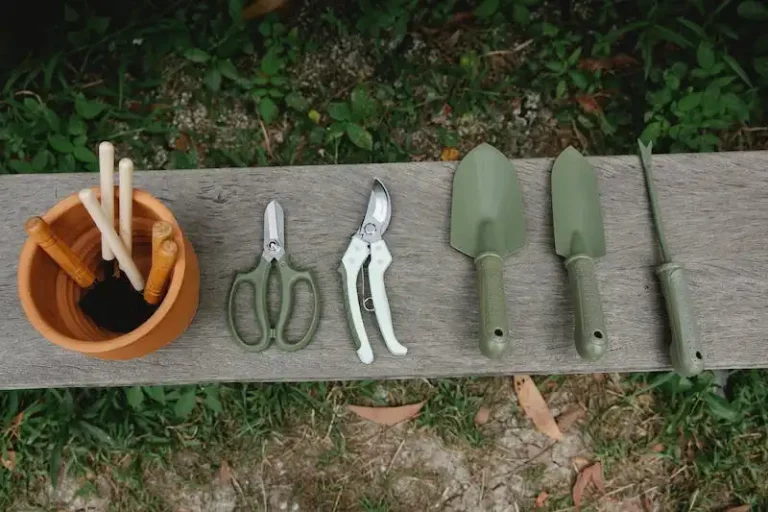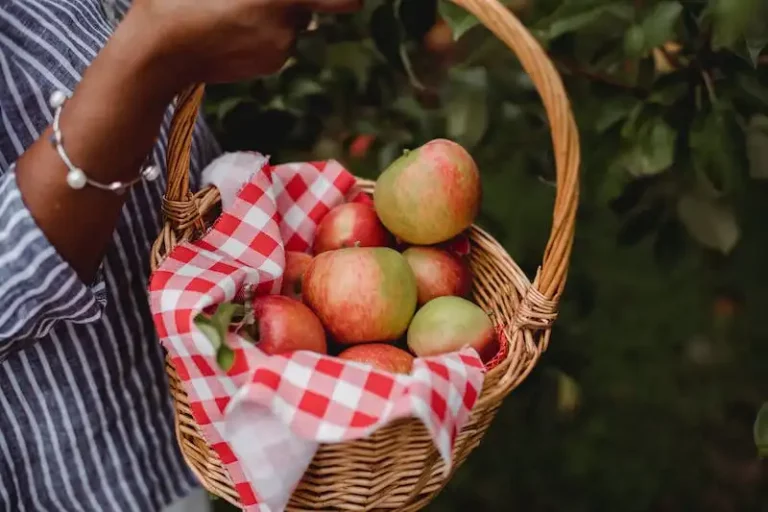If you’re a beginner’s gardener and want to try growing your own fresh and tender Asian vegetables at home, bok choy is a great choice. Also known as Chinese cabbage, this fast-growing crop is very popular among gardeners for its easy cultivation and delicious taste. In this article, we’ll guide you through the process of harvesting bok choy, from seed to plate.
Bok choy is a cool-season vegetable that thrives in a frost-free environment. To grow bok choy, start by planting seeds in a well-draining soil in early spring or fall. Bok choy seeds are tiny, so make sure to thin them out and keep the soil moist during the germination process. Once the seedlings sprout, choose a part of your garden that receives full or partial shade, as bok choy prefers cooler temperatures.
Caring for bok choy is relatively easy. Water the plants consistently, especially during dry periods, but avoid overwatering as it may invite fungal diseases. To prevent damage from insects like cabbage worms, you can use collars made of cardboard or cut-up plastic cups around the base of each plant. Applying a thin layer of soap mixed with water on the leaves can also deter pests.
As bok choy grows, you’ll notice that the outer leaves of the plant start to form a compact head. This is the part you’ll harvest and enjoy in your meals. Harvest the whole plant by cutting it at the base, or you can harvest the outer leaves as they grow, allowing the inner leaves to continue maturing. To keep your bok choy fresh, store it in a bowl of water in the refrigerator before using it in salads, stir-fries, or other recipes.
Harvesting Bok Choy
When it comes to harvesting bok choy, there are a few important things to keep in mind. The best time to harvest bok choy is when the leaves are dark green and fully grown. You can start harvesting the outer leaves first, picking them from the base of the plant and working your way up.
The process of harvesting bok choy is fairly simple. Begin by using a sharp knife or shears to cut the individual leaves from the plant. Be sure to only pick the leaves that are fully grown and avoid picking any that are still small or yellow. These smaller leaves can be left to grow further and picked later.
If you have multiple bok choy plants, you can choose to harvest the entire plant at once. Simply cut the plant at the base, leaving about an inch or two above the soil. This will allow the plant to regrow and produce new leaves for future harvests.
When harvesting bok choy, it’s important to consider the spacing of the plants. Bok choy grows best when spaced about 6-8 inches apart. This spacing allows for proper air circulation and prevents the plants from competing for nutrients. It also makes it easier to weed and care for the plants.
As for the flowers that bok choy plants produce, you can either leave them on the plant or remove them. The flowering part of the plant is edible and can be added to salads for a refreshing and crisp addition. If you prefer to harvest the plants before they flower, simply remove the flowers as soon as they appear.
If you’re a beginner’s gardener, bok choy is a great vegetable to start with. It is relatively easy to grow and doesn’t require a lot of space. Bok choy also thrives in cooler weather, so it’s a good choice for those who live in a colder climate or have a north-facing garden that gets less sun.
When it comes to caring for your bok choy plants, they will need regular watering and occasional feeding. It’s important to keep the soil evenly moist, especially during hot and dry periods. Regularly check the moisture level of the soil and water as needed. When it comes to feeding, you can apply a balanced organic fertilizer according to the instructions on the package.
In conclusion, harvesting bok choy is a simple and rewarding process. Whether you choose to pick individual leaves or harvest the whole plant, bok choy provides a delicious addition to salads and other dishes. If you’re interested in learning more about growing bok choy, there are plenty of resources available online, including beginner’s guides and gardening forums.
Growing and Harvesting Bok Choy at Home
Bok choy, also known as Chinese cabbage, is a delicious and easy-to-grow vegetable that is a popular choice for salads, stir-fries, and other Asian dishes. Growing bok choy at home allows you to have a fresh supply of this tasty green throughout the growing season. Here are some tips on how to grow and harvest bok choy in your own garden.
Bok choy can be grown from seed or seedlings. If starting from seed, sow them directly in the garden bed. Bok choy is a fast-growing plant and can mature in as little as three weeks. Plant the seeds about three inches apart and thin them to one plant every six inches once they reach two to three inches in height. If using seedlings, place them in the garden bed at the same distance apart.
Bok choy prefers a sunny location in the garden but can tolerate some shade, especially in hot climates. It needs well-draining soil that is rich in organic matter. Water the plants regularly to keep the soil moist, especially during dry periods. Applying a layer of mulch around the base of the plant can help retain moisture and suppress weed growth.
Bok choy plants should be harvested when they reach a suitable size. The outer leaves can be picked individually as needed, or the entire plant can be harvested at once. Bok choy heads are ready to be harvested when they are firm and have reached their full size, which is usually around six to eight inches in height. Make sure to harvest the plants before they start to bolt, or send up flower stalks, as this can negatively affect the taste and texture of the leaves.
To harvest bok choy, use a sharp knife or scissors to cut the plant at the base, just above the soil line. If the leaves are dirty, rinse them gently with water and pat them dry with a paper towel before using them. Bok choy can be stored in the refrigerator for up to a week.
Bok choy is a versatile and nutritious vegetable that can be enjoyed in a variety of dishes. Whether you buy seedlings or grow from seeds, caring for bok choy plants is relatively easy, making it a great option for beginner gardeners. Try growing bok choy in your garden this season and enjoy the fresh taste of this delicious Asian green.
When to Pick Bok Choy
Knowing when to pick bok choy is an important part of growing this nutritious vegetable. Bok choy sprouts quickly and is ready to harvest in as little as 30 days after planting. It’s essential to pick it at the right time to ensure the best taste and to avoid damage to the plant.
So, what happens if you leave bok choy in the ground for too long? If you wait too long to harvest, bok choy can start to bolt and go to seed. This can lead to a bitter taste and tough texture. To avoid this, make sure to pick bok choy before it starts flowering.
When harvesting, what should you look for? The best time to harvest bok choy is when the plant is fully grown, but before it starts flowering. The outer leaves should be firm and a vibrant green color. You can start harvesting the outer leaves when they reach about 3-4 inches in length. Baby bok choy can be harvested at an even smaller size, usually around 2 inches in length.
To harvest bok choy, simply grasp the stalk near the base and cut it down with a sharp knife or shears. You can either harvest the whole plant or just pick a few leaves at a time, depending on your needs. The best way to keep bok choy fresh after harvesting is to place it in a bowl of water to keep it hydrated until you are ready to use it.
One thing to consider when harvesting bok choy is that it is a cool-season vegetable. It grows best in zones 2-7 and thrives in temperatures between 45-75°F. If you live in a warmer climate, you may need to plant bok choy in the fall or early spring to avoid the heat of the summer.
When caring for bok choy, it’s important to keep the soil consistently moist. Bok choy craves water and requires regular watering, especially during dry spells. To prevent the plant from becoming infected with diseases, avoid watering the leaves and focus on the soil.
In conclusion, picking bok choy at the right time is crucial for enjoying its fresh and tasty leaves. Harvest it before it starts flowering to avoid a bitter taste. Consider the growing zone and temperatures to determine the best time to plant and harvest bok choy. With proper care and attention, you can enjoy a bountiful harvest of this nutritious and delicious vegetable.
Growing and Harvesting Bok Choy
Are you interested in growing your own bok choy? It’s a delicious leafy vegetable that is commonly used in Asian cuisine. With a little bit of care and attention, you can easily grow bok choy in your own garden.
Here is a beginner’s guide to growing and harvesting bok choy:
- Choose a planting location: Bok choy grows best in a spot that receives full sun but can tolerate some shade, especially in hotter climates. Make sure the area has well-draining soil.
- Prepare the soil: Before planting, loosen the soil and remove any weeds or rocks. Consider adding compost or organic matter to enrich the soil.
- Start from seeds: Bok choy can be grown from seeds or transplants. If you choose to start from seeds, sow them directly into the ground about ¼ inch deep and 12 inches apart.
- Watering: Bok choy plants need regular watering, especially during dry spells. Keep the soil consistently moist, but not waterlogged. Avoid overhead watering to prevent the development of leafy diseases.
- Spacing: As the bok choy plants grow, thin them out by removing weaker seedlings. This will provide enough spacing for the remaining plants to develop fully.
- Caring for the plants: Bok choy plants are relatively low-maintenance. However, keep an eye out for common pests like aphids and cabbage worms. Use insecticidal soap or other organic pest control methods if necessary.
- Harvesting: Bok choy plants are usually ready to harvest around 45-60 days after planting. Start by picking the larger outer leaves, or you can harvest the whole plant at once. Use a sharp knife or shears to cut the base of the plant just above the soil level.
Enjoy your fresh bok choy in stir-fries, soups, or salads. Its mild flavor and crunchy texture make it a versatile ingredient in many dishes. Growing bok choy at home is not only rewarding but also allows you to enjoy this nutritious vegetable whenever you like.



